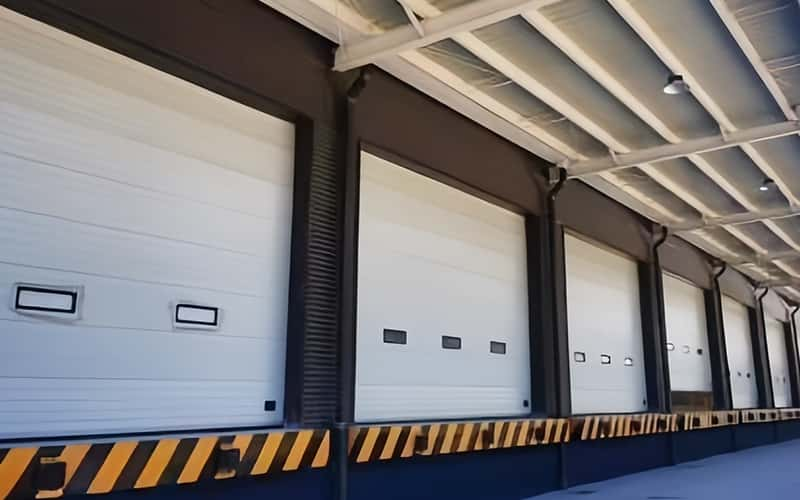
I. Structure
1. Sectional Doors: These doors are designed to maximize space efficiency by allowing the door tracks to be installed along the ceiling or walls, enabling smooth operation and optimal use of space. This design overcomes the limitation of rolling shutter doors, which can only utilize fixed installation spaces, thus significantly enhancing the internal space utilization of the workshop.
2. Rolling Shutter Doors: When opened, the door rolls up and is stored above the entrance, saving interior space. This design also prevents dirt, rain, and snow from entering the space, while maintaining a stylish and modern appearance.
II. Features
1. Features of Sectional Doors
Material Structure: Typically composed of two layers of galvanized steel sheets with a sprayed finish, these doors are highly resistant to oxidation. The space between the steel sheets is filled with high-density polyurethane foam, providing excellent thermal and acoustic insulation as well as strong mechanical resistance.
Sealing: The door structure is compact and durable, thanks to the use of spring-loaded polyurethane seals.
Surface Treatment: The surface is treated with a classic powder coating process, which offers strong durability, resistance to aging and corrosion, and ensures long-lasting appearance with minimal maintenance.
2. Features of Rolling Shutter Doors
Security: Equipped with an anti-push-up device to prevent forced entry, ensuring security and theft prevention.
Safety: Optional features include an obstacle detection system that automatically reverses the door upon encountering an obstruction, preventing collisions and enhancing safety.
Versatile Installation: Depending on the building’s characteristics, rolling shutter doors can be installed inside, outside, or between the wall openings, catering to various space requirements.
III. Material
1. Sectional Doors: The door panels are made from double-layer hot-dip galvanized steel sheets filled with polyurethane foam. Compared to standard rolling shutter doors, this enhances fire resistance, and compared to fire-rated rolling shutter doors, it offers a cost-effective solution.
2. Rolling Shutter Doors: The motor for rolling shutter doors has fewer functions compared to that of Sectional doors but can still be connected to remote controls, radars, and other electrical switches. Safety devices such as infrared sensors and airbag safety edges can also be installed.
IV. Operating Modes
1. Sectional Doors
Electric Operation: The most common method, involving button control with a manual emergency release device.
Manual Operation: The door can also be manually operated using a chain hoist.
Magnetic Loop Operation: Ideal for environments requiring quick closing after vehicle passage, such as forklift and vehicle entry points.
2. Rolling Shutter Doors
Manual Shutters: Operated by manually pulling the shutter, aided by torsion springs on the central axis of the shutter.
Electric Shutters: Driven by a specialized motor that rotates the central axis of the shutter. The motor automatically stops when it reaches the preset upper or lower limit. There are various types of motors available, including external motors, Australian-style motors, tubular motors, fire-resistant motors, and high-speed motors.








